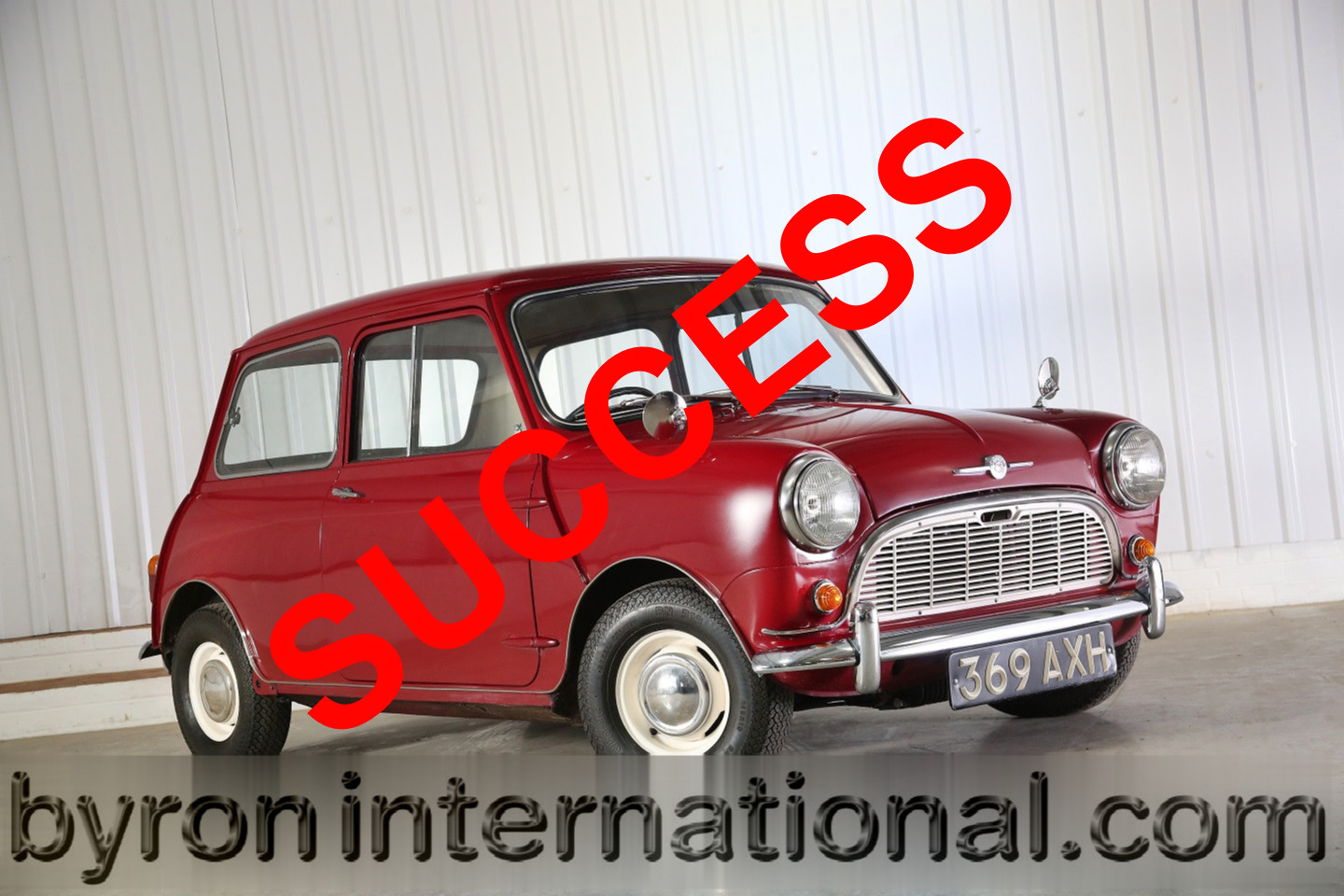



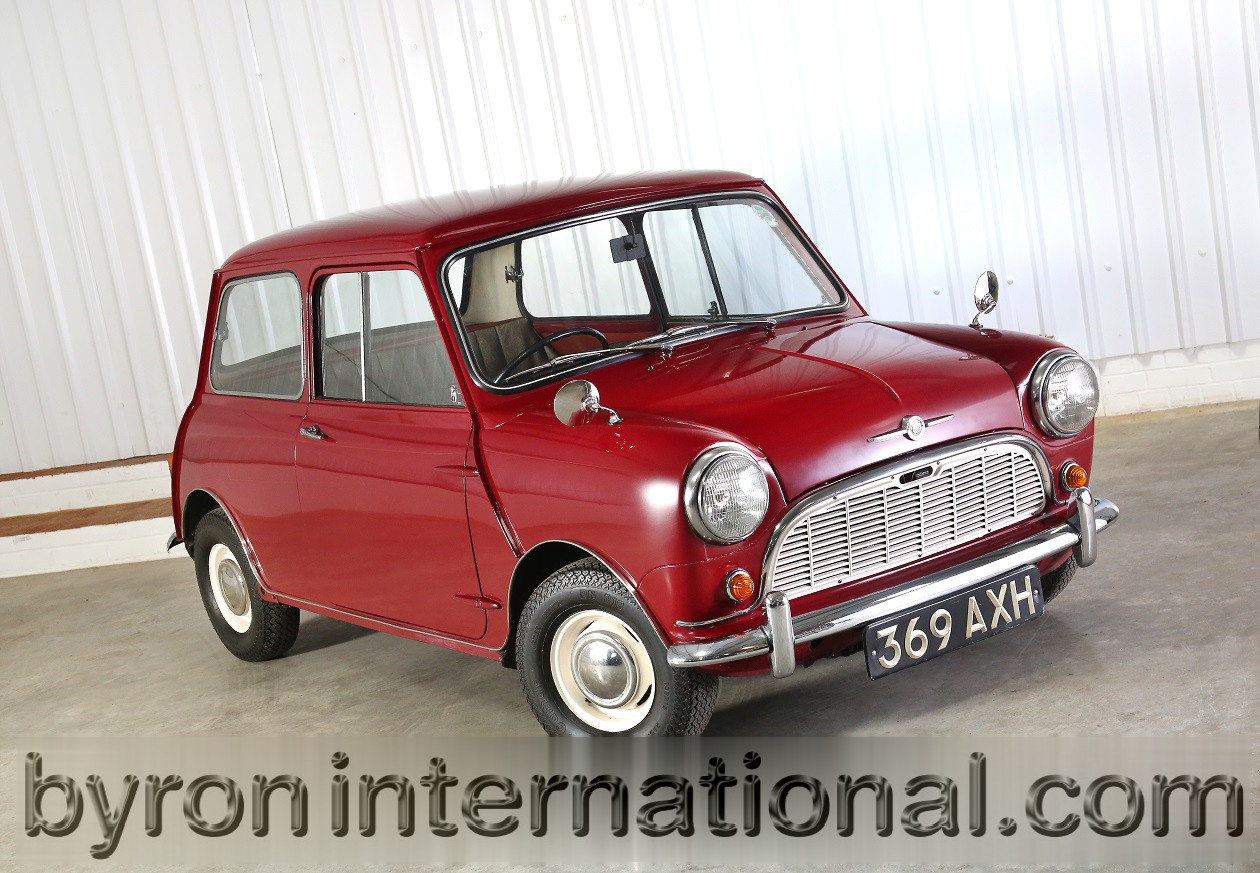

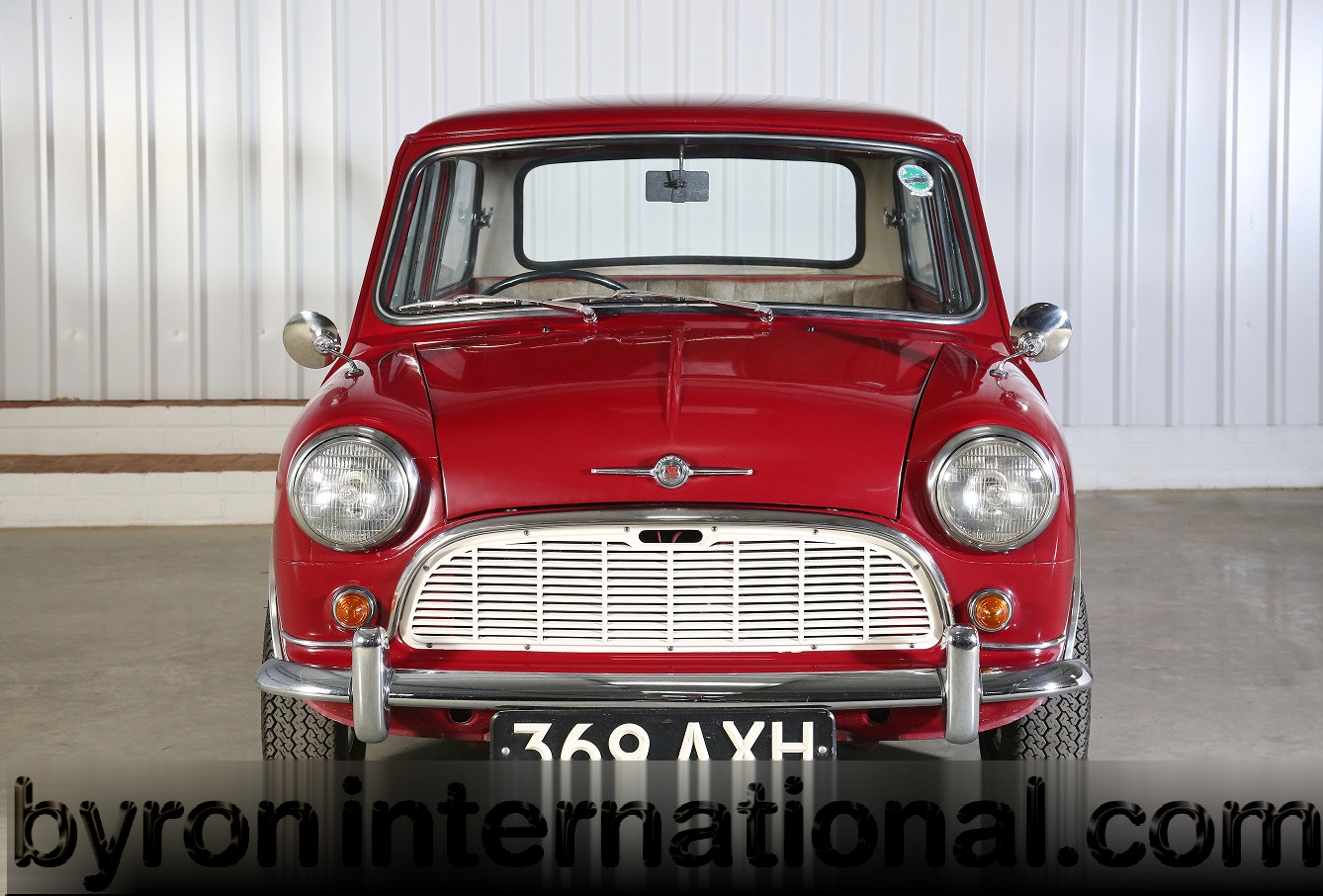



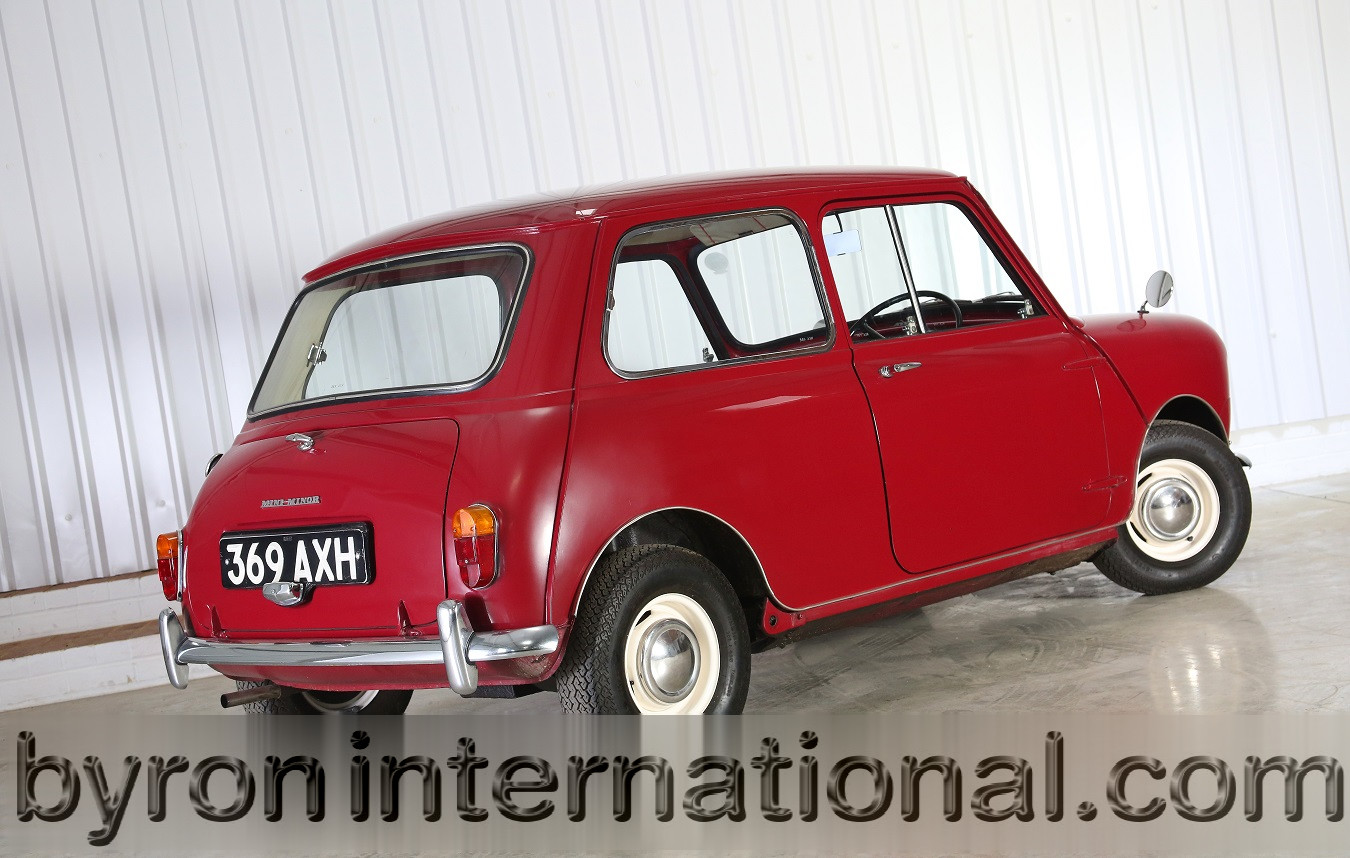
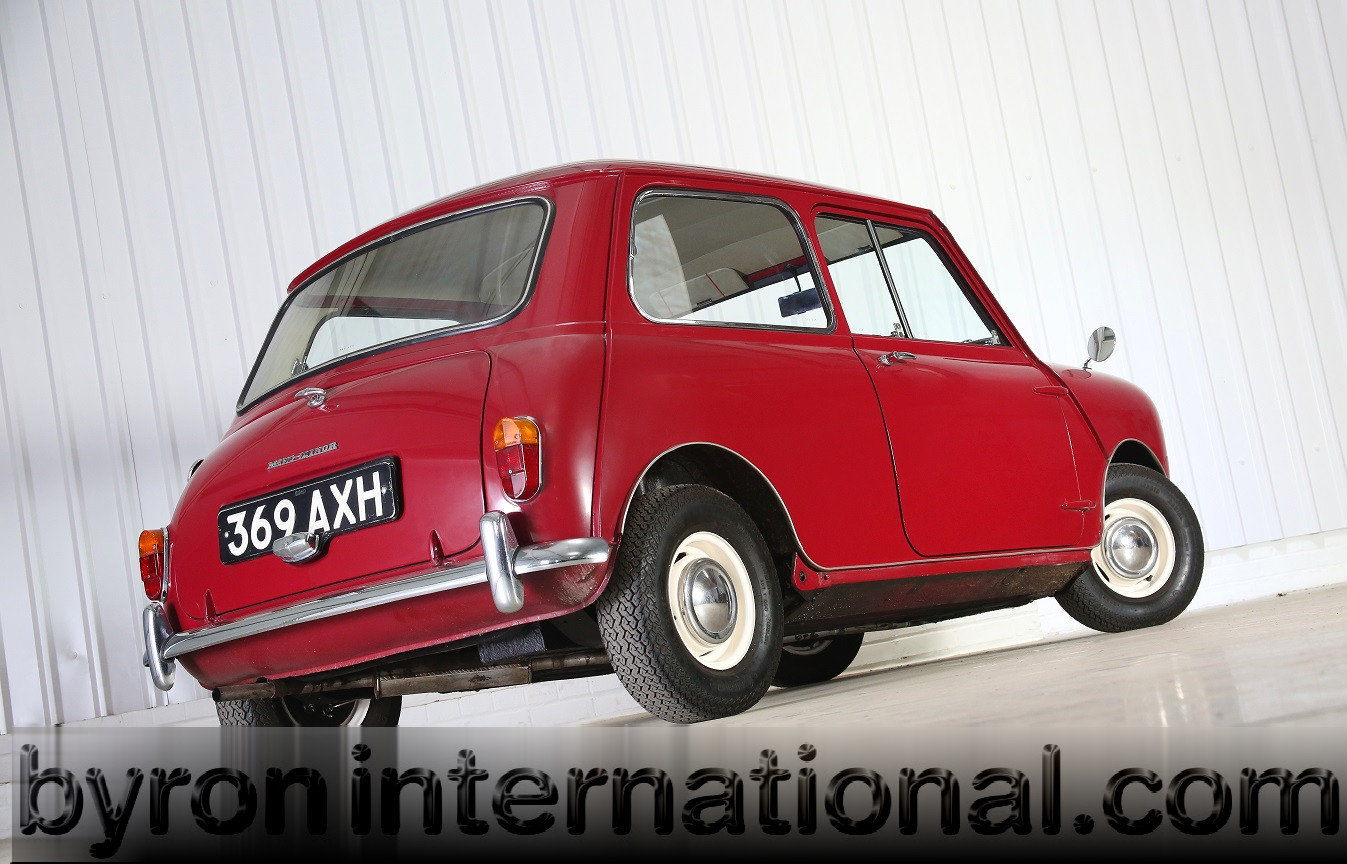


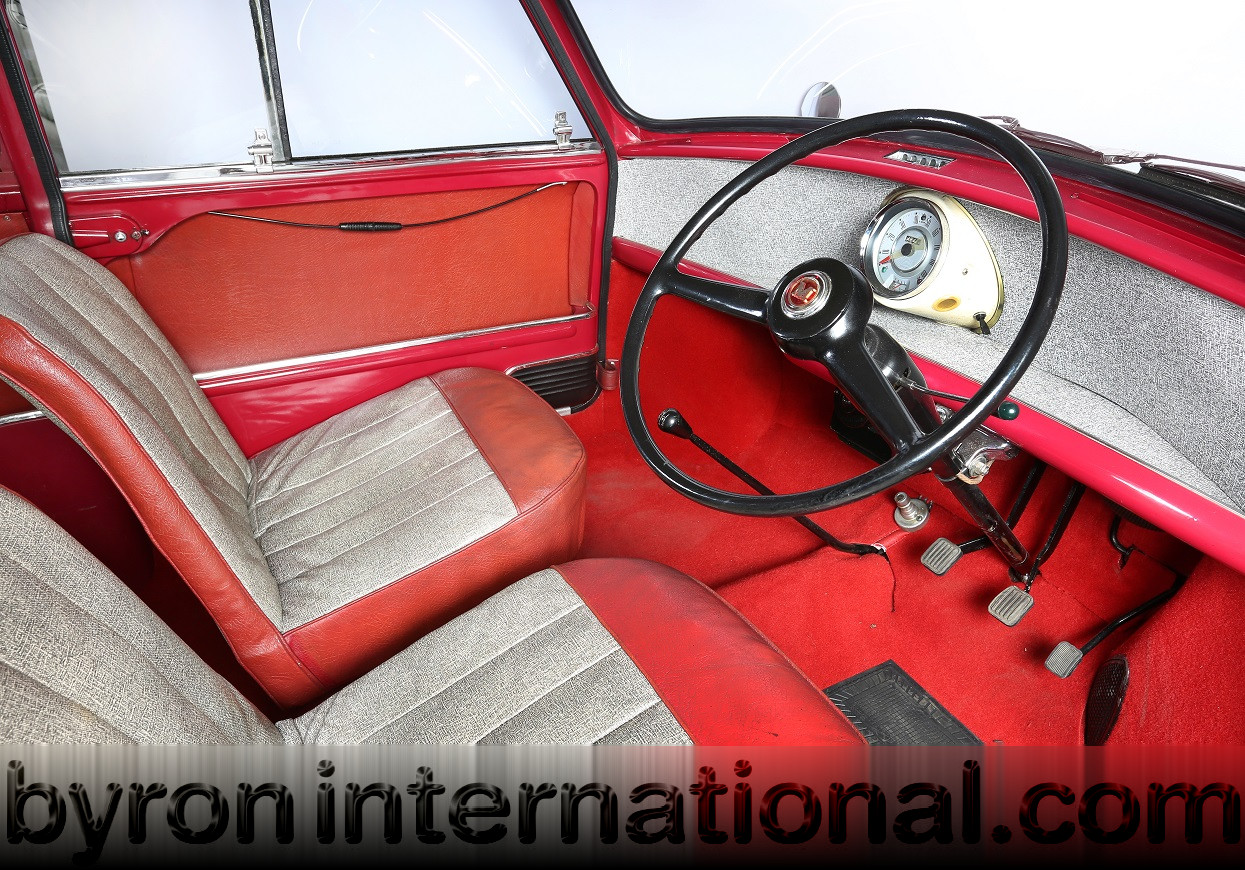
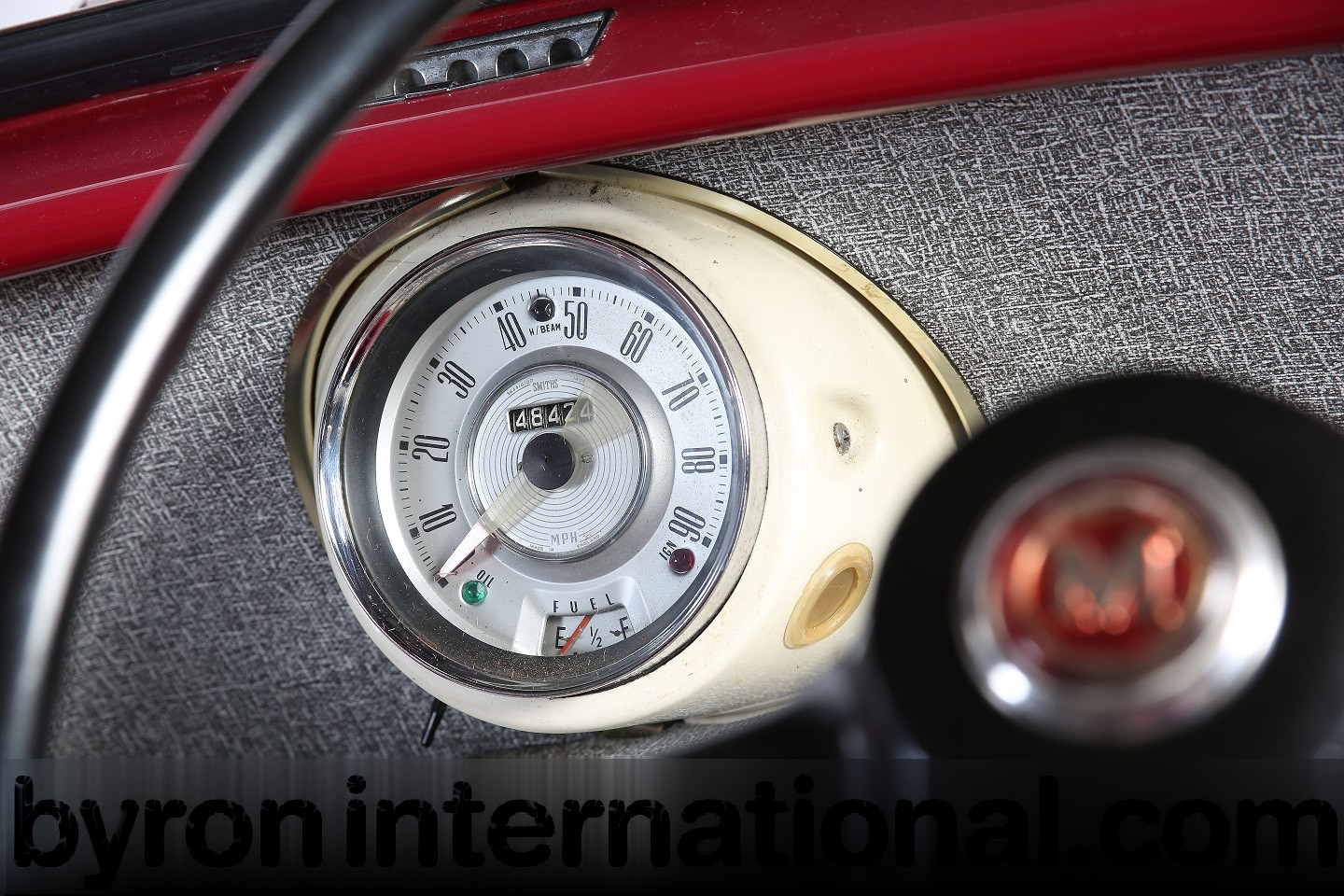

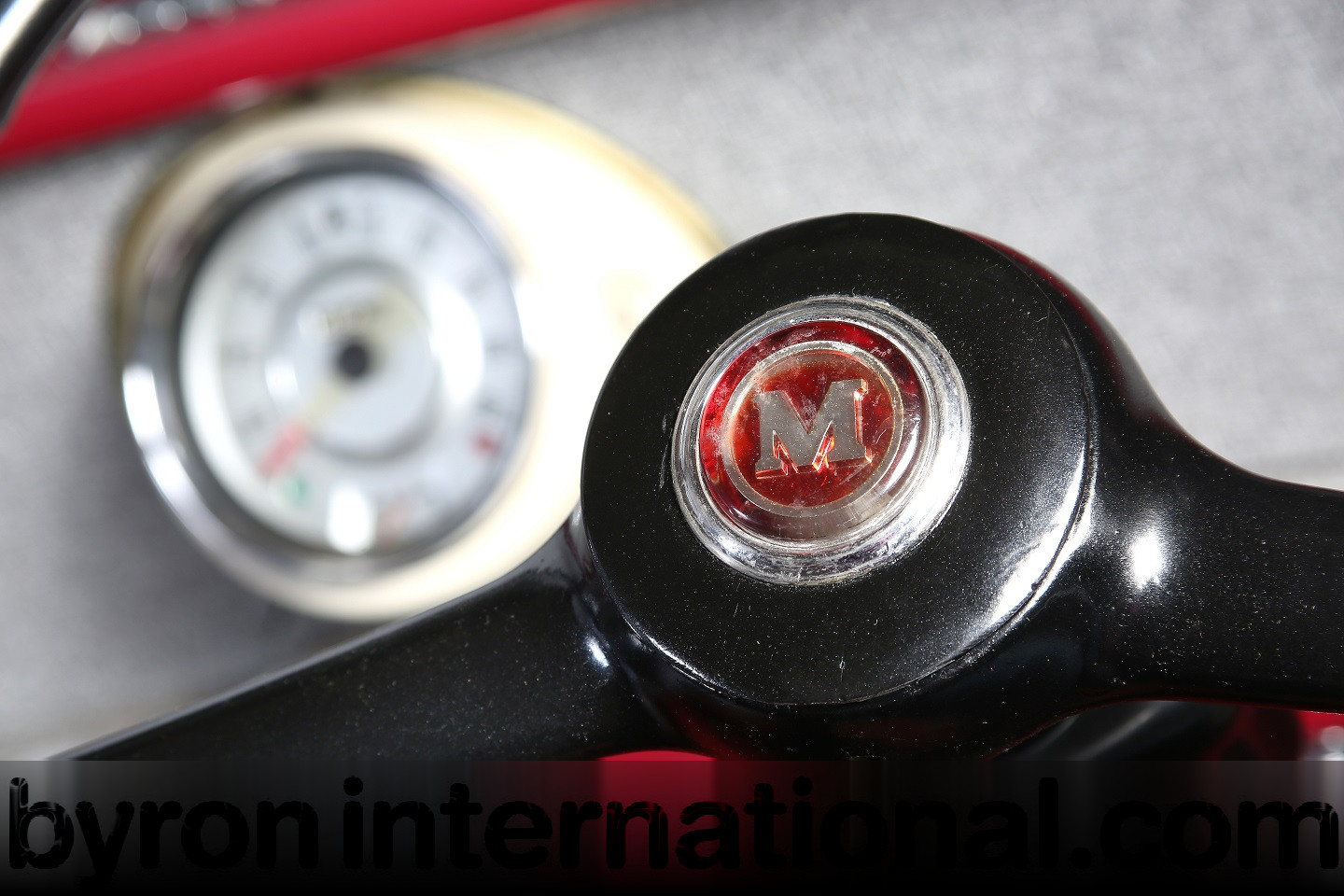


Chassis Number: M/A2S4/26584
Engine Number: 8AM-U-H29321
UK Registration Number: 369 AXH
Date of first reg: 17th July 1960
Exterior colour: Cherry Red
Hood:
Interior colour: Beige / Red Vinyl
Current Odometer reading: 48,300
Mileage Warranty:
Steering: Right
Transmission: Manual
Options:
Background
For a true background and a mark of the leap forward that the Mini represented, here are the words of the contemporary Autocar report:
Earlier in the year – in April – we were very happy to be able to describe and test a new British small car from the ordinary and, in many respects, a major step forward. Now, following the Triumph Herald, a second outstanding and original small car design has emerged, this time from the British Motor Corporation.
This 850cc design, the work of Mr. Alec Issigonis and his team, bristles with originality, yet there is nothing remotely freakish about it. Whether they be engineers or laymen, those who examine this car are unanimous as to the good common sense and ingenuity built into them. “The road test will gladden many hearts for it gives promise.
There is good reason to believe that these new cars will be able to better even the remarkable records of the two small car series after which they are named. Perhaps it is appropriate at this time of launching to wish good luck and Godspeed to the new models, and to all who work on them and drive in them.†The ‘gladdening’ road test was certainly complimentary of the £378 10s motor.
Throwing convention to the winds often produces freaks in the automobile world, but when done by a clever and imaginative designer, the result may be outstanding,†we said. “This is certainly the case with the Morris Mini-Minor, which was found to set new standards of comfort and road worthiness in the very small family car class.â€
When one is standing beside the car it appears low and small, 10in wheels accentuating this effect. Inside, however, it is found that there is as much space, or more, than in larger cars.â€
With the 847cc 4-cylinder engine set across the nose, and beneath it the entire transmission for driving the front wheels, nearly 80 percent of the car’s overall length of 10ft is made available for passenger and luggage accommodations. Head and elbow room are adequate for both front and rear seat passengers. The rear seat is wide enough for two adults and a small child on shorter journeys.â€
The road testers also complimented the driving position for comfort and visibility and said the unusually erect steering was easy to get used to.
Although the “very long†gearstick was stiff and awkwardly positioned, it was decent to use: “The clutch is light and sweet and, in fact, the whole transmission feels as smooth as in a good conventional front-engined, rear-drive car.
The engine peaks at higher revs, namely 5500rpm, and it is smooth throughout the range,†we said. “It is also quiet up to 55mph in top gear but noisier than at the natural cruising gait of 60mph, when the fan can be heard also."
Throttle response is so immediate, and the engine so willing to rev freely, that is often necessary to restrain it from exceeding the chosen speed,†they continued, commenting that the flexible engine "showed no distress even at its top speed of just over 70mph."
Such was the success of the design that a normal man would not find any difference in driving between the Mini and a regular rear-driven car, we believed, saying: “It has its wheels at the extremities, and, together with an all-independent suspension system employing rubber as the springing medium, this has brought about a very high level of stability and road holding.†“When fast cornering is indulged in, the behaviour is clear cut and predictable and the car plays no tricks,†we said, also noting that roll was negligible.
It was comfortable for passengers, too: “Riding comfort is very good indeed. Irregularities of British main roads are effectively absorbed and damped at any speed,†and although sometimes noisy, we found the Mini to “ride poor surfaces very wellâ€.
Another success for the Mini was its “smooth and progressive†drum brakes with “ample power,†which Autocar’s testers could not make significantly fade. With regards to owning, signs were good. Fuel economy worked out at 40.1mpg, or 34.8mpg in heavy traffic ¬– impressive for such a car at the time.
The boot was a mild let down, though, as we considered it to be “a little small in comparison with the space allotted to passengersâ€, although more items could be carried by opening the boot’s downward-hinged lid and held in using the built-in cable, while various storage in the passenger area was also impressive. The sliding windows were also not quite up to scratch. Although their aperture was “just enough for the driver to get his head through and ample enough for hand signalsâ€, they were “difficult to engageâ€. Some other rattles were also detected in the bodywork. “The manufacturers are to be congratulated on producing, at a truly competitive price, an outstanding car providing unusual body space for its size, and one in which four persons can enjoy comfortable, safe and economical motoring. It is far from being an underpowered miniature and has a very lively performance; it is certain to interest the sporting motorist because of its fine handling qualities. It scores in heavy traffic on account of its size, and its minimum overhang, front and rear, makes parking an easy matter in congested cities.†Summary: Alex Issigonis’ design is an automotive landmark in itself and in acquiring this outstanding example, you will be buying your own piece of that seismic change in the democracy of car ownership. A recorded history of an unbroken 40-year ownership by the first registered keeper with original documentation, manuals and those personal and contemporary observations by the people who looked after the car. Add the October 2006 copy of Mini World which includes Peter Wright’s personal account of his part in the history of the car and you have a portfolio of investment to put alongside what is a cracking example of the Morris Mini Minor. Book your place at Goodwood Revival, the London to Brighton Mini Run, the Silverstone Classic…?!Vehicle History
This lovely car comes with a rare pedigree of clear ownership – just three owners since 1960 – and a well-documented service and maintenance history. That history starts with a typed invoice from Hitches Garage in Eltham, London that notes it supply to the first owner, a Mrs Gwendoline Emily Briscoe. As a quaint reminder of times past, the receipt is marked with a 2-penny stamp and the price, which included Purchase Tax, Delivery, Number Plates and Road Tax totalled £588 18 shillings and 1 penny. Also noted on that invoice was a process called “Rubberseal†– and early version of undersealing that later owners would be grateful for.
Original handbook, service voucher book and Workshop Manual all survive as do copious invoices of the time many accompanied by hand written notes from either the owner’s husband or service agents. She is a car that was properly maintained by the Briscoes throughout their ownership – an ownership that took them to Mr Briscoe’s sad demise.
In fact, the second chapter of this remarkable car’s history comes when a Mini enthusiast, Peter Wright was approached by a passer by outside his office car park. Peter had parked his immaculate 1999 Mini Cooper in the car park and the man asked if he would be interested in a 1962 Mini 850 that the he was selling on behalf of his mother, whose late Father had bought the car when brand new.
Peter says the car was covered with rags and old curtains where it had sat in a garage for 12 years – as he uncovered the car, it revealed that every panel was rust free, there was a small dent in the boot, the engine bay looked perfect and the interior was unmolested. Aside from flat tyres and a rusted rear subframe, she looked pretty good.
A price was agreed and Peter arranged for collection of the car, with the tyres pumped up and rolling her onto the transporter, he was handed a carrier bag of all the original documentation which included the detail that the car was in fact registered in 1960!
Back in his garage, closer inspection showed that all the panels were original (thank you Rubberseal!) and the interior had its original carpets and even rubber mats – the webbing and padding of the front seats needed replacing but the rest was just perfect.
Off came the cylinder head, a service, the carb rebuilt, a new voltage regulator and radiator and the engine, which at that stage had covered just 46,000 miles, was running again.
Initially, in an effort to retain total originality, just restricted is attention to the bodywork to a good amount of elbow grease but fading colour and pitting on the roof finally persuaded him to strip the car back to bare metal and prepare the car for a local specialist to respray the car in its original Cherry Red.
Peter had christened the car “Gwendoline†after its first owner and had a sense that with a car of this nature, he was just a custodian of its history and sold it in 2012 through Barons to the current owner, a collector, where it joined a stable that included other British classics like E Type and Austin Healey.
Service History
One word describes the Service History of “Gwendoline†– SUBSTANTIAL! Normally, it is part of our presentation process to list dates, mileages, service agents and job sheet detail, but that would be to miss the real essence of this car’s history.Where would you list the hand-written reprimand handed out by the Service Agent to the Owner that starts “Dear Mr. Briscoe, I very much regret that you have not carried out my explicit advice and given your car two long runs on consecutive days to clear any sludge under the primary gear bushes.
We have listed the MOT’s in the file but the early certificates have no provision to note mileages – and for students of price inflation, how about a 15,000-mile service carried out on 21st December 1965 for the princely sum of 18/7d!
There are three distinct ring binders of service records – Volume 1 covers the first decade from registration to 1970, Volume 2 covers the balance of the ownership records for the Briscoes and the final Volume 3 has a photographic record of “the find†and all the invoices from its recommissioning into what you see today.
01.06.66 Not recorded
11.08.67 Not recorded
19.04.83 43,805
10.01.86 44,529
09.08.90 45,080
02.08.91 45,369
17.03.03 45,631
20.03.04 45,816
31.03.05 46,533
01.04.06 46,737
31.03.07 47,516
29.03.08 47,741
04.04.09 48,024
06.05.10 48,217
21.05.11 48,300
